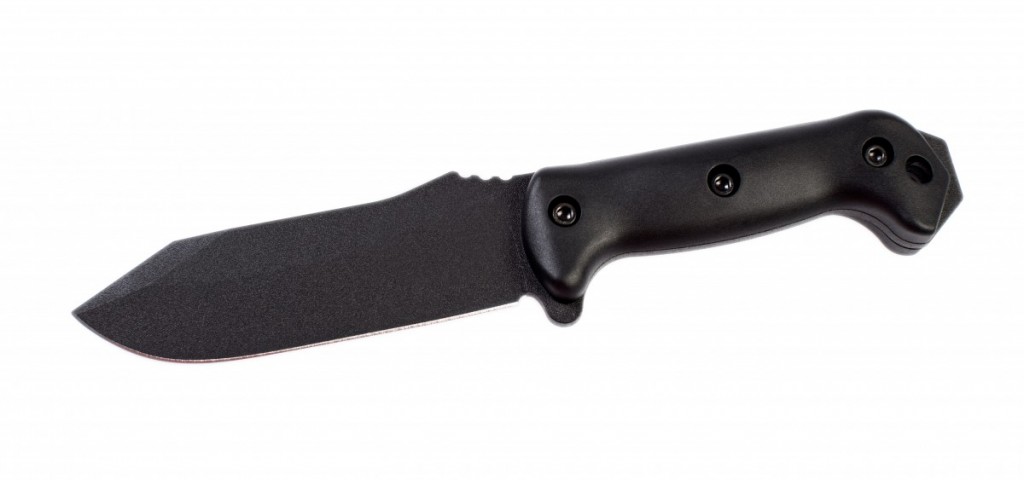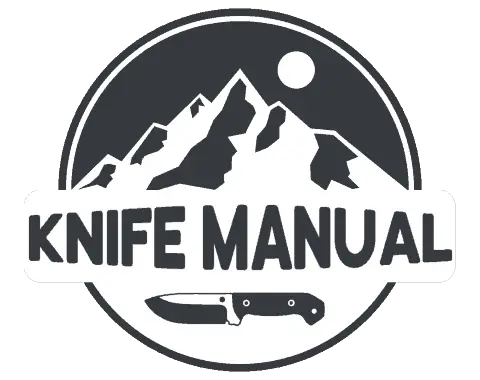Have you ever just looked over at a fixed-blade knife and wondered, “Does the steel of the blade extend all the way to the butt of the handle, or does it only go part-way through?”
Yeah, me neither. I’ve never just randomly looked at a knife and asked myself that. But knowing how a basic knife is constructed, and familiarizing yourself with some terminology regarding its structure can be very helpful. This information will come in very handy when you’re buying a knife or judging if a particular knife is strong enough to handle a certain task.
In simplest terms, the tang is the lower portion of the knife blade that extends into the handle to provide leverage and support. A full tang knife is when the steel extends to the very end of the handle. Partial tang, or half tang, is when this piece of steel only extends partially into the knife handle.
Let’s take a deeper look at the differences between the two types of tang, as well as the pros and cons of each.
Table of Contents
Why are there Different Types of Knife Tangs?
There are many reasons for having different lengths and types of tang in different knives. Each unique type and style has its strengths and weaknesses. Depending on what the knife’s intended use is, the company or bladesmith would choose what type of tang would work best for that particular knife.
In general, partial tang knives are generally less hardy and strong when compared to full tang knives. This is due to the simple fact that when you hold a full tang knife, your full hand is able to grip the tang of the blade that extends into the handle. On the other hand, when you use a partial tang knife, you are only able to grip the tang of the knife with your fingers because it does not extend through the entire handle of the knife.
The Different Types of Tang
Although there are only two main categories of knife tang. Full and partial. Many different subcategories exist within each of these main ones. Each of these subcategories is a slight variation on their parent category, but are more specialized and achieve different results
Full tang knives can come in a variety of different styles. Including full, encapsulated, hidden, extended, and skeletonized tang. While partial tang can come in partial, rat-tailed, tapered, or pushed. Below I’ll describe each type in more detail so that you can get a better understanding of what each looks like and their functionality.
In a few cases, the type of tang is less dependent on the actual structure of the tang and more on how the handle material is attached to the knife tang. If you would like a deeper look into the different types of handle materials available, check out my article on the topic by clicking here .
.
Full Tang
Considered one of the strongest types of tang a knife can be made with, full tang extends to the very end of the handle. Although full tang technically only means that it reaches the end of the handle, it is widely accepted that full tang means the tang is also the same width and height as the handle of the knife.
Encapsulated Tang
Encapsulated tang is when the handle material of the knife is molded to fit around the tang. This type of tang is extremely strong and durable because there is almost no chance of the handle material slipping or breaking as it is molded directly to the tang. The downside to this type is the obvious limitation of materials. Very few materials can be manipulated so as to mold around the tang of the knife.
Hidden Tang
Much like encapsulated tang, hidden tang is when a handle material is attached so that it completely hides the tang and makes it invisible from the outside. The difference between this type of tang and the previous one is the fact that hidden tang is not molded; instead, it is either a single piece of material or multiple that have been attached to the tang of the knife using epoxy, pegs, or other methods of attachment. Hidden tang is often used to achieve the same result that encapsulated tang would, the difference is that it can use materials that are not able to be molded.
Extended Tang
Extended tang is a very unique and practical style of tang, going beyond the typical strength and support that the tang usually brings to a knife. While full tang extends to the very end of the handle of a knife, extended tang does just what the name suggests and extends the tang beyond the end of the handle. This leaves a strong metal surface on the butt of the knife, allowing it to be used as a sort of hammer pommel tool. An all-around versatile thunker on the bottom of your knife.
Skeletonized Tang
This type of tang is often used on knives that have a wrapped cordage handle or no handle material at all. Skeletonized tang is when portions of the tang are removed to reduce weight while keeping many of the structural benefits of the full tang. Inevitably removing material from the tang will make small weak points in the structure of the knife. But these points are usually so small that they are never an issue unless put under extreme circumstances.
Partial Tang
Partial tang is when the tang of a knife only extends partially into the handle of the knife. This type would be used in knives that are not meant to experience much hard-core usage, need the center of balance pushed toward the blade, or to decrease the overall weight of the knife. With this design, you sacrifice some structural integrity for lightness. While partial tang knives used to never be used in survival and everyday use knives, many machine-made partial tang knives are now growing in popularity due to their increased strength thanks to precise machines.
Rat-Tailed Tang
Generally thought to be the weakest style of tang, the rat-tailed tang drastically changes width and height at the beginning of the handle of the knife. This makes the blade of the knife look somewhat like a rat and the tang is its tail. Hence the name. Rat-tailed tangs are usually used in show knives and knives that are not meant for heavy use. This style gives up some serious structural steadiness in the name of being light and easy to carry.
Tapered Tang
The tapering tang is a sort of middle ground. This style of tang slowly tapers off the width as well as the height toward the butt of the knife. This gets rid of material while not giving up too much structural soundness. Making the tapering tang a middle ground between being light and portable, while still maintaining structure and sturdiness. The only major downside to this design is that in some cases, tampering with the width of the tang can produce slight weak points that will only be brought to light in extreme conditions.
Pushed Tang
While not the most strong and reliable method of attaching handle material to a tang, the pushed tang style is when you pound your tang into the end of a piece of pre-made handle material and secure it with epoxy. This style is often cheaper to produce, due to not having to finish the tang because it is completely hidden in the handle material. This style used to be frowned upon because of its weakness, but with recent advancements in machines, this style has become a lot more sturdy and popular.
The Pros and Cons of Partial Tang Knives
The main reason and only major benefit that a partial tang knife has over its full tang cousin are how light they can be made. By using less material on the tang, partial tang knives are able to be made lighter and therefore become easier to carry around and be used on an everyday basis.
The big downside to this is the fact that partial tang knives are not as tough as full tang knives. A con to this type of tang in a knife is that it will be difficult to do tough or hard tasks such as carving, survival, and anything else that might strain a knife. While these tasks can certainly be done with a partial tang knife, the chance of the blade shifting or breaking becomes a real issue.
The Pros and Cons of Full Tang Knives
Besides the added weight that a full tang brings, I can’t find a con or a reason to dislike a full tang knife. The added inch or so of steel makes all the difference when stability, strength, and a good solid knife is needed.
A full tang knife allows you to tackle tough tasks and problems that would make a partial tang knife nearly snap. A full tang knife can take on any task within reason; as long as you’re not trying to cut rocks or carve asphalt. This type of knife can take on almost any problem. Whether it’s camping, carving, survival, or anywhere else you might possibly need a good, solid knife.
How To Identify what Type of Tang Your Knife Has
It is often important to know what type of tang your knife has so that you can keep in mind its strengths and capabilities. Always check the packaging, company website, and online reviews of the knife you are buying to check for the tang and other specs. If for any reason you aquire a knife that you don’t know what type of tang it has, use the process of elimination and online tools to figure it out.
While there are occasionally completely new designs and hybrids of the previously mentioned tang styles, the nine that I showed above are the typical ones you will encounter. So use that and eliminate ones you can easily identify.

A major thing to check for that could eliminate many possibilities is a thin line of metal running along the top of the handle of the knife. While not all full tang knives show this, if the stripe is present, it’s a good chance that your knife is some sort of full tang knife.
Once you have identified or roughly know what type of tang your knife could have, pay attention to its weaknesses and strengths so as to not overwork and possibly break your wonderful tool.
Should I Get a Full or Partial Tang Knife?
This question is highly subjective and has no definitive answer, but in many cases, it is handy to have a full tang knife versus a partial. While a full tang will be slightly heavier, the extra strength and durability of having a solid metal knife are almost unbeatable. So, personally I would say get a full tang knife, but it really depends on what you intend to do with your knife.
If you just want a small, handy knife to open boxes and do things around the house, you might benefit from having a smaller, lighter knife. But as soon as you think you might want to go camping with that knife, you’re going to need a little more reliability than a partial tang can provide.


